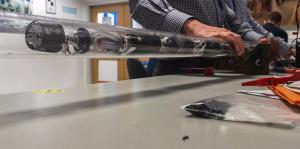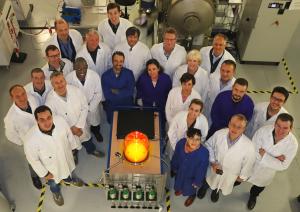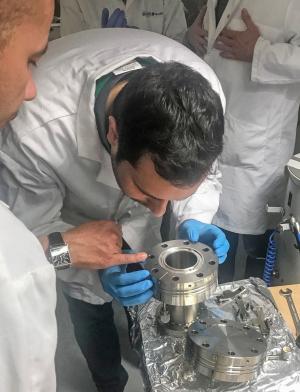A whole suite of tools and technologies
The Greek philosopher Aristotle (384-322 BC) knew nothing about tokamaks. But when he stated in his famous aphorism that "Nature abhors a vacuum,"¹ he anticipated one of the problems that tokamak designers would face 25 centuries later.
Vacuum occupies a large part of ITER, both literally and figuratively—vacuum volumes are huge and vacuum challenges daunting. Successful plasma operation rests on the quality of the vacuum in the (aptly named) vacuum vessel, but also in the cryostat, the neutral beam injection system, and many other systems.
Some leaks are "tolerable" but others are not. "There are thresholds," explains Liam. "We can cope with the thermal shield or magnet system leaking a minute quantity of helium into the cryostat. But a leak into the vacuum vessel, whether of air or water, starts to affect plasma performance as the size increases and so cannot be easily tolerated."
Conceptualized by the ITER Organization and developed by Doosan Babcock in Scotland, the working prototype of the articulated tool can propel itself inside pipes no larger than 40 millimetres in diameter, move forward and backward, take a 90-degree turn and, thanks to a tiny video camera and built-in lighting system, provide high-resolution images (better than 0.01 mm) of potential cracks or faulty welds. The device, which is evocative of an ultraminiaturized freight train or an oversized, segmented tapeworm, is equipped with inflatable "bladders" that can isolate and locate leaks in precise sections.




